Raid the dressing-up box, guys and gals, for this week the Supersizers turn Medieval!
Despite massive deja vu after Heston's Medieval Feast, the Middle Ages has always provided good tv fodder, and Giles and Sue throw themselves into the task with gay abandon.
William the Conqueror had just dis-eyeballed Harold and England became overrun with Normans from France.
So Giles is playing Norman Baron, and Sue is the Anglo-Saxon maiden who he's just conquered.
They're living in Penshurst Place (I've been there!), the biggest Medieval manor in England.
Martin Blunos is their chef for the week, and though he looks more Viking than Medieval, he also looks more fun than Marcus Wareing so I'm happy.
Anyway, it seems Medieval folk had some funny ideas about food and health.
Firstly, they believed that you were ruled by four humours: yellow bile (vomit), black pile (poo), blood and phlegm, and that each of these had a specific character trait.
Too much yellow bile made you choleric, too much black bile made you melancholic. Too much blood made you sanguine. Too much phlegm made you phlegmatic. Unsurprisingly, Sue tends to melancholy and Giles is choleric.
Secondly, for four days a week they gorged on meat and then, because gluttony was a mortal sin, they'd "fast" for the other three days by only eating fish - though no-one ever went hungry.
Thirdly, they thought that if anything bad happened, it was down to a person's sins, so for breakfast instead of food, they'd have penances (sometimes involving whipping) to atone and to purify themselves.
The main meal in the Middle Ages was dinner served at 10 to 12 and Giles and Sue are ready to get stuck in, using plates of stale old bread called "trenchers".
Dinner
1st Course: Broiled Steaks of Boeuf (like mulled cow); Poussin Farci; Pigeons stuffed with Apples and Prunes; Coney (Rabbit in Broth); Small Beer.
As the Normans were a minority elite, they'd have official tasters who would check their food hadn't been poisoned. Chef Blunos gets stuck in, and Giles explains that Beef, Mutton and Pork come from the Old French Boeuf, Mouton and Porc since only the Normans got to eat the beasts, whilst the poor Anglo-Saxons just got to rear them.
2nd Course: Turk's Head Pie; Meatballs presented as Golden Apples (Meat Fruit!); Cockentrice: a Fantastical Beast.
The Cockentrice was believed to be a creature hatched from a cock's egg incubated by a venomous snake that could turn base metals to gold.
The Cockentrice was actually a turkey ramrodded by a piglet. Or a pig being bummed by a goose if you're Heston Blumenthal.
Martin Blunos gamely stitches the comical beast together for the delectation of Giles and Sue. I have to say, it looks grim but tasty - tonnes of crackling.
Time for some sport. Falconry was big in the Middle Ages. Only the King could have an eagle; princes had peregrines, knaves had kestrels, and barons like Giles had hawks.
If you got a birdy upgrade, they'd chop off your hand - but Giles is happy with his hawk and trains it to topple Sue's headdress.
Hunting was also popular but rather difficult, as the new king William decided that he owned all the land and forests, and therefore all the animals and firewood on it - if you killed one of his deer, you'd get blinded for your efforts.
All this bloodthirsty activity would get folk fired up, so supper was a balancing meal at dusk.
Boar in Sweet & Sour Sauce was the antidote for phlegmmy excess, Fish in Sweet Sauce was cheering and ideal for melancholy, but Venison in Frumenty was bad for cholerics like Giles.
Giles and Sue fight over the venison, the boar is an interesting precursor to Pork and Apple and Duck a l'Orange, but no-one wants the sugared pilchards which simply succeed in making Sue very, very angry.
The next day, Giles is up early to get knighted, which involves kneeling down before being cuffed in the head (none of this sword malarkey).
It wasn't till the second half of the 13th Century when Richard the Lionheart was pin-up boy that the classic image of chivalrous knights became cemented, where they needed to impress damsels in distress with their hunting, fighting and courting skills.
As a display of physical prowess, Giles has a bit of a joust and tries to avoid getting crestfallen (ie having his helmet knocked off).
Meanwhile Sue is perfecting her Rapunzel act by waiting patiently in a tower to be rescued. She passes her time playing the harp and sampling a dish of Medieval aphrodisiacs - pomegranate, almonds (good for sperm production) and coriander seed known as "dizzy corn" as it was a narcotic in large quantities.
According to Sue there were only three fates for a lady in those days (a) drugged and compliant, (b) off to a nunnery or (c) growing a beard and then getting crucified.
Sir Giles is now off to the Crusades to stop the Saracens. As well as the obvious repercussions, the Crusades had a massive culinary impact as rice, lemon, sugar, cinnamon and pepper were introduced to British palates.
Giles' guests for his Crusades Dinner are cookery writer Anissa Helou (awesome hair) and Professor Jonathan Phillips.
Crusades Dinner
1st Course: Tagine al Sikbaj: Lamb with Dates, Figs and Vinegar; Maqluba: Lamb in Mint, Pepper and Cinnamon; Aran: Yoghurt and Mint Drink; Jaleb: Date Syrup.
Spices were incredibly valuable in the Middle Ages - the Crusaders who captured Caesaria were apparently paid in pepper.
2nd Course: Syadia Tagen: Fish in Cinnamon with Rice served with Orange Blosson Sauce or Pomegranate and Rosewater Sauce; Dajaj Mousakhan: Spicy Chicken with Onion and Sumac; Arac: Aniseed liqueur.
Anissa declares that this is real Holy Land food to be eaten with scoops of bread. Prof Jonathan points out that the Crusaders actually fasted before battle to purify themelves. He also tells us that Saladin sent Sherbet with Ice from the Lebanon to Richard the Lionheart, as it was the custom to send an honourable opponent a cooling drink.
In 1215, the Barons ganged up on then King John to sign the Magna Carta - forcing him to cede much of his Royal land, proving that he was no longer above the law. The Magna Carta gave us the tight of Trial by Jury and the right not to be cheated by food sellers - a proto Weights and Measures Authority.
Giles and Sue hold a Celebration of the Magna Carta with Michael Portillo, alleged Magna Carta expert, and food historian Colin Spicer.
Celebration of the Magna Carta
1st Course: Baron's Meal - Boar's Head with Flowers; Pheasants with Dried Fruit Sauce; Spiced Gamebirds; Venison Haslett (pressed venison with sorrel sauce).
2nd Course: Peasant's Feast - Eel Pie; Smale Byrds Ystwde; Nuncheons.
Nuncheons were a dried vegetable stew that would be taken to the fields and rehydrated with ale (water was unsafe). Peasants got through 5,000 calories a day, much in the form of bread made with rye, barley, wheat and the odd hallucinogenic weed. If the harvest was bad, the people starved - in 1315 there was a flood of Biblical proportions and no harvest for 3 years after that.
More Medieval quackery - in the Middle Ages, folk believed that disease was caused by sin and bad smells so a wake-me-up of steeped herbs and flowers was often prescribed. Rhubarb was a miracle cure - purging choler, driving away flatulence and withdrawing flame from the stomach.
Despite the rhubarb, the Black Death hit in 1348 - nearly half the population died of bubonic plague. There was one good thing to come of this - due to a shortage of labour, women were allowed to work for the first time - breweries were popular.
So Sue's off to Brew Wharf to meet ale maker Richard Fox. He's let an authentic Medieval mix of yeast, grain and water sit for five days to make Sue's Evil Brew, though he hasn't used the traditional fermentation acceleration methods of gobbing in it or letting chickens roost on top.
The resulting mixture is grimly cloudy and Sue's on the floor in minutes.
The very first English cookery book "The Form of Cury" was commissioned by Richard II in the Middle Ages.
The Canterbury Tales were also penned by Chaucer around this time - the basic premise being a group of pilgrims telling tales in order to win a meal.
Like the original pilgrims, Giles and Sue fail to make it to Canterbury and instead stop off at Aylesford Priory to pay the monks to do their penances for them.
This practice was so rife that monastic meals were notoriously (and ironically) gluttonous.
A Monastic Fast
Porpoise and Frumenty (porpoise - some mistake surely?); Tart of Pickled Fish; Fish in Jellye; Flatfish in Sauce Egardusye; Spiced Pike; Whelk Leach (looks like spam); Oysters in Gravy; Eel and Salmon Fritters.
Sharing the repast with Giles and Sue are Rev Richard Copsey, Carmelite historian and Henrietta Leyser of St Peter's College, Oxford.
The dishes are all fish, as fish was pure as it didn't bleed or remind you of the Body of Christ, and meat was considered sinful for building up strength and sexual potency - you were literally tempted by the flesh.
However, "fish" was defined quite widely to include rabbit, beavers' tails (they were scaly) and barnacle geese which apparently grew on trees and then fell off into the water.
Anyway, it's the end of Medieval Week and so Sir Giles and Lady Sue will celebrate with a Feast Day! Such a feast would take weeks to prepare, even for the average kitchen staff of 100.
There'd also be entertainment throughout the feast (which served sweet and savoury dishes together) and could go on for days.
As well as the staff of Penshurst Place, Giles and Sue have invited food historian Nicole Fletcher and Medievalist John Goodall partly to share and partly to show off because food is power.
Chef Martin Blunos is preparing all manner of beasties for their delectation including a whole Peacock served with its skin and feathers intact.
The star of the show is clearly the Coq en Met - a turkey riding a suckling pig, dressed for a battle with lance and cape in the colours of the lord of the manor - basically a turkey superhero.
As well as juggling dwarves, fire-eaters and acrobats, between each course came subtleties, like bright wobbling jellies, gilded gingerbread, eggshells stuffed with marzipan and date leach meaning something you lick - which is where we get the word "lech" from. These fanciful dishes were all designed to make the guests giggle.
At the end of the feast, all the remains including the used trenchers, would be handed out to the poor at the gates, again to show the largesse of the nobility.
However, Sir Giles and Lady Sue choose to forgo this ritual for once, possibly to avoid having it thrown back at them, and instead they tipsily totter off to bed.
Next week, the Supersizers Eat the Fifties.
All screencaps copyright BBC
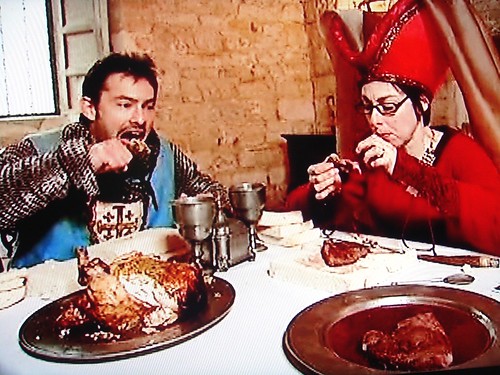
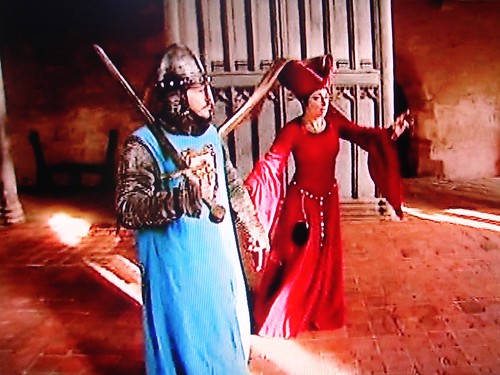
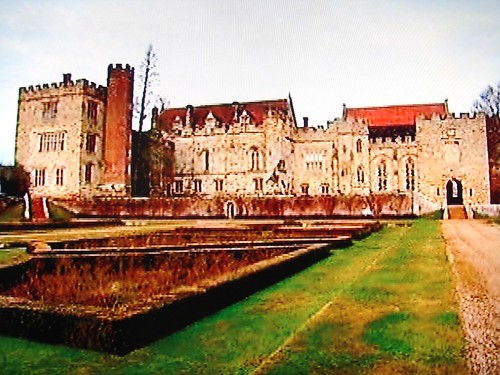
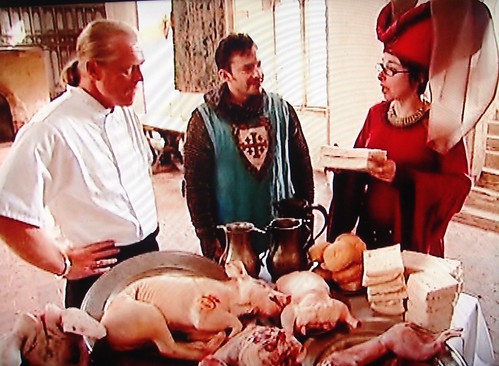
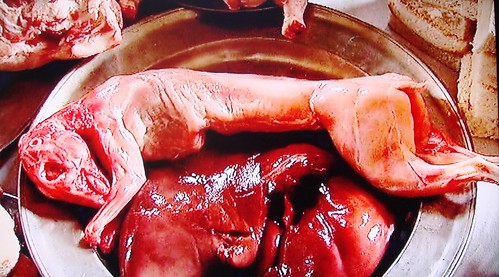
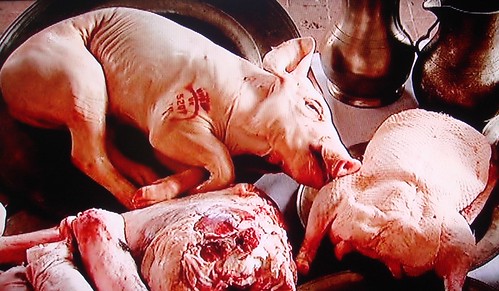
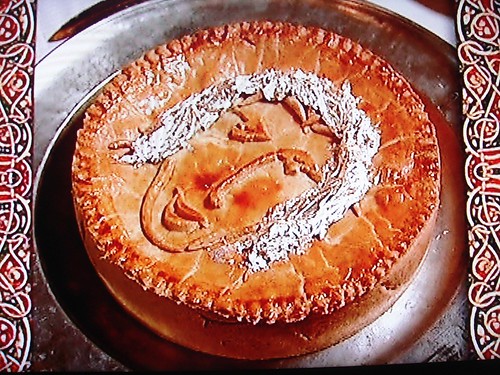
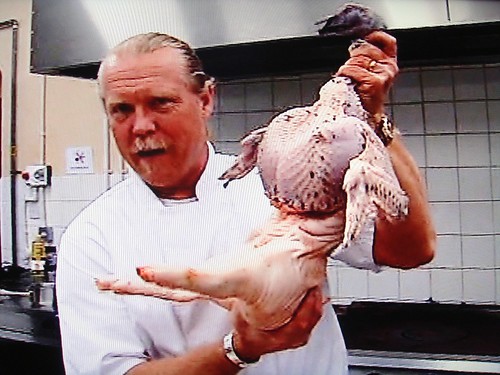
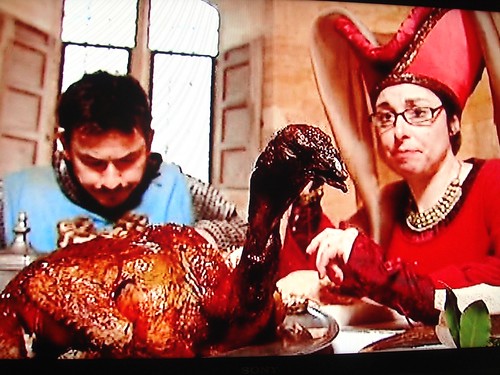
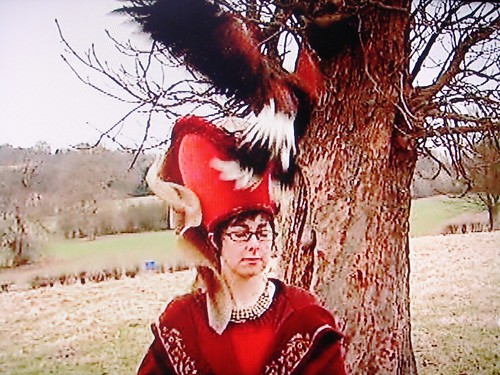
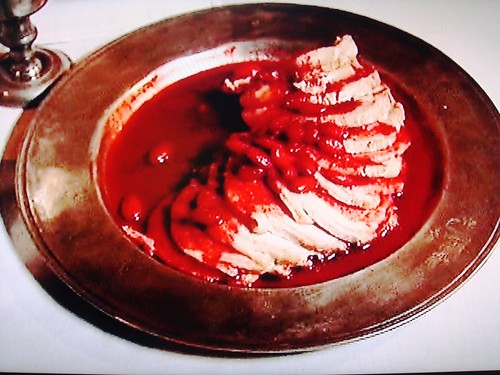
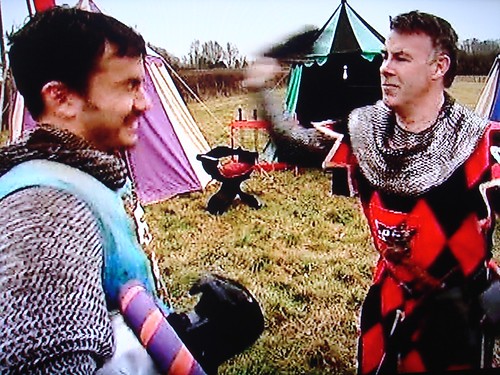

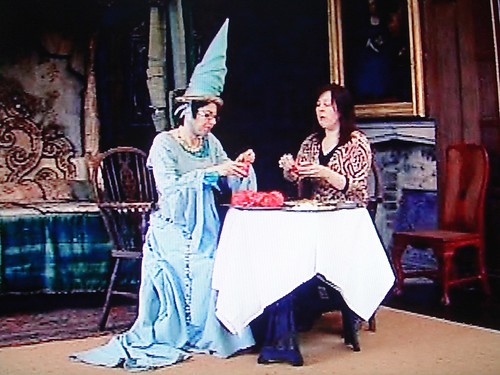
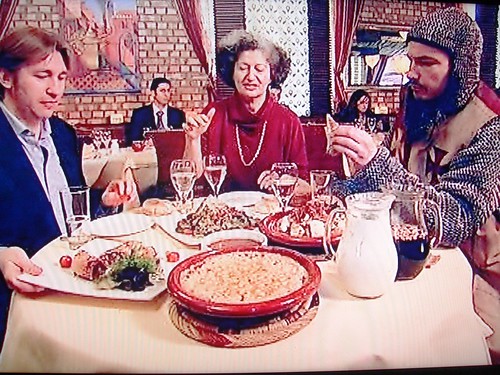
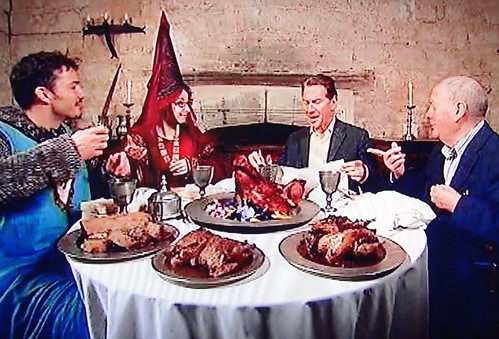
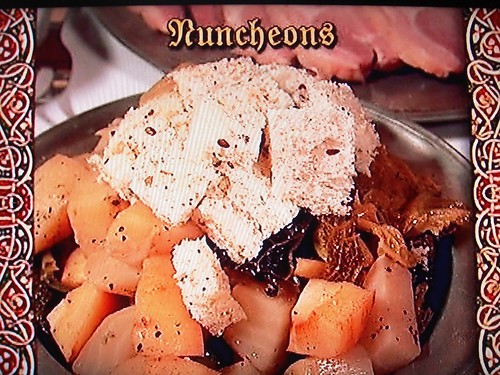
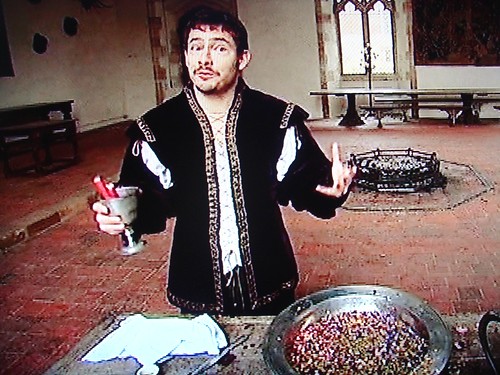
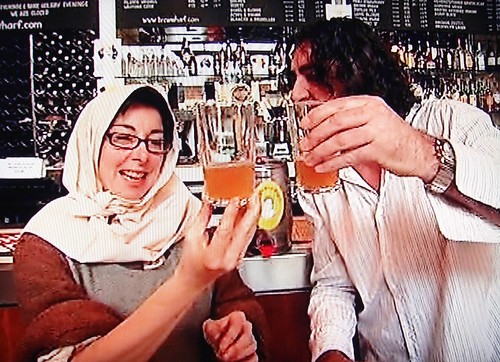

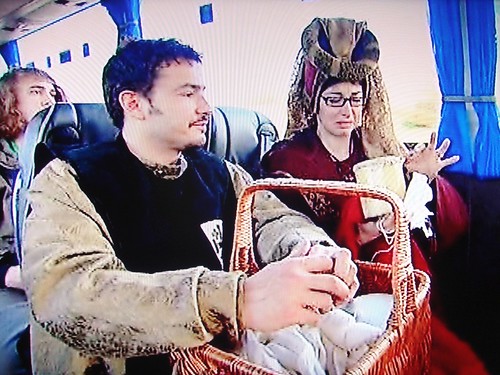
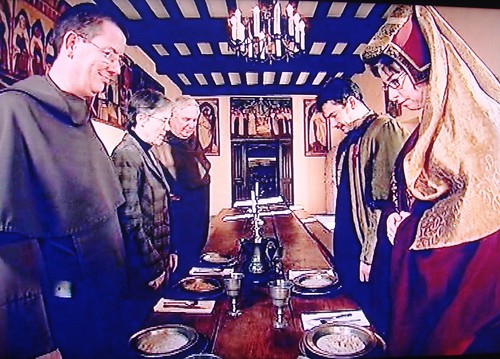
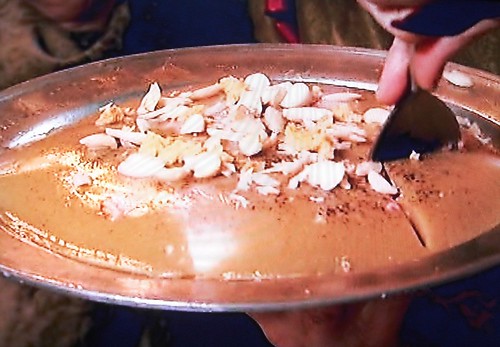
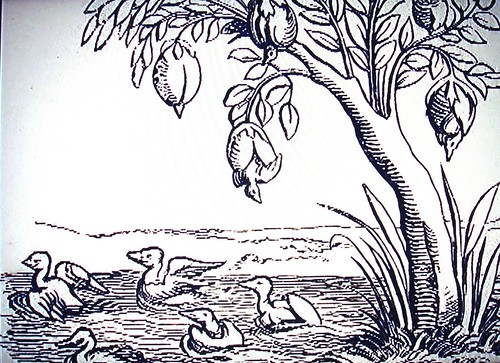
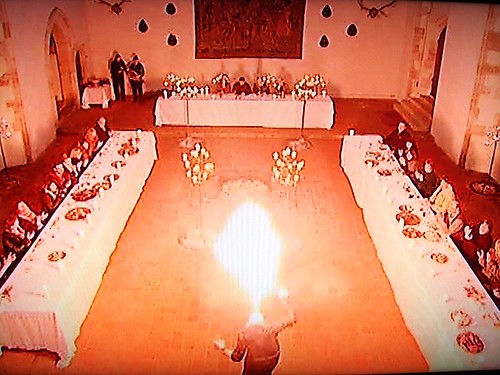

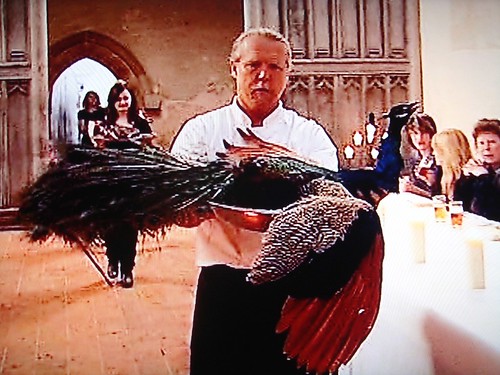
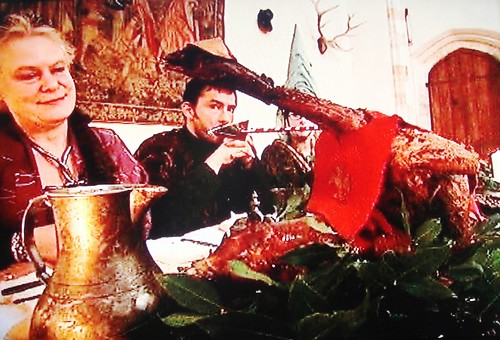
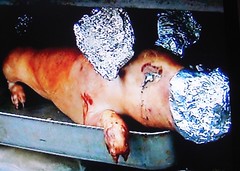

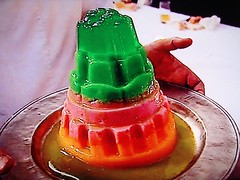
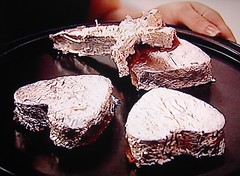
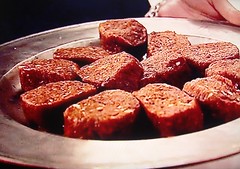
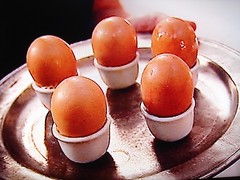
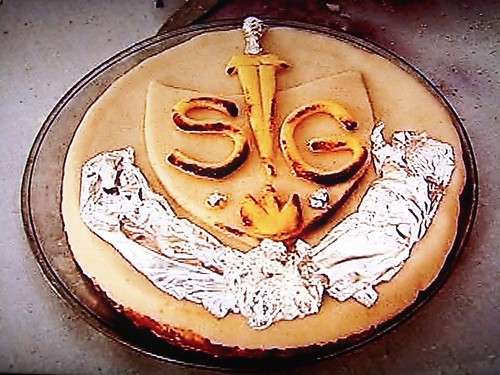
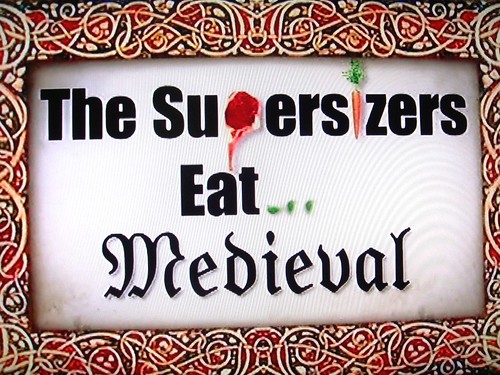
Comments
@gastrogeek - Watch it - that first sentence makes you sound like my mother-in-law ...